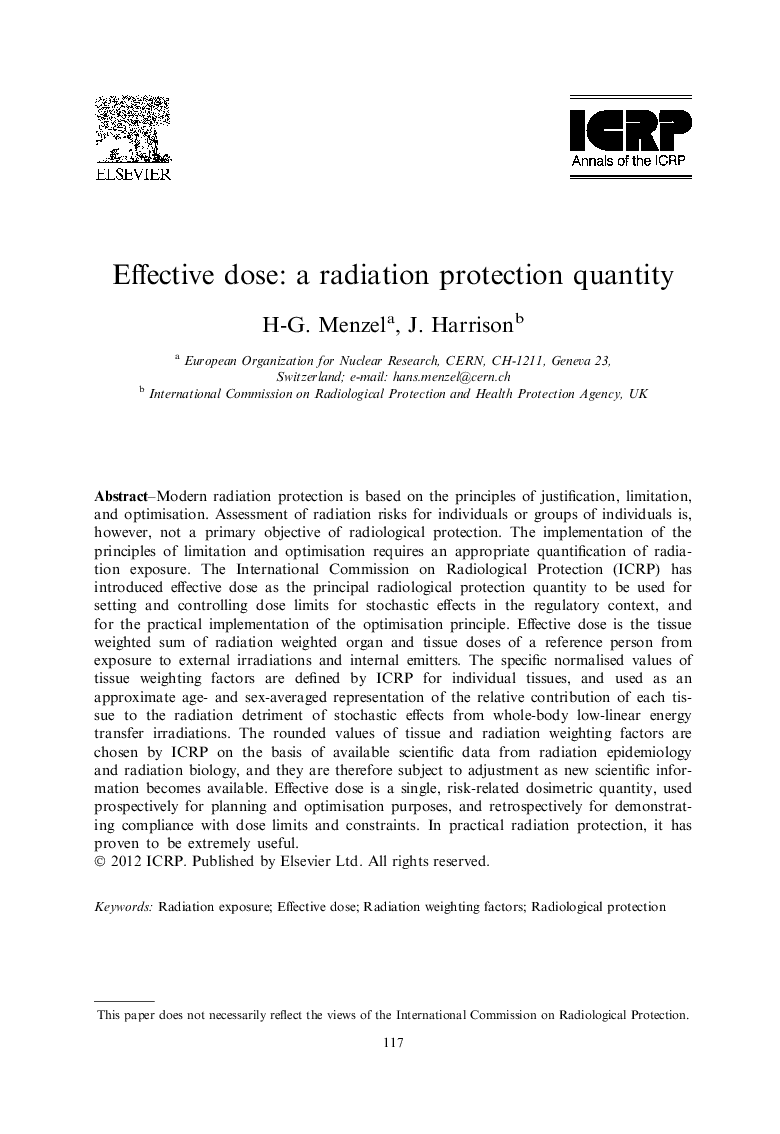| Article ID | Journal | Published Year | Pages | File Type |
|---|---|---|---|---|
| 1878530 | Annals of the ICRP | 2012 | 7 Pages |
Abstract
Modern radiation protection is based on the principles of justification, limitation, and optimisation. Assessment of radiation risks for individuals or groups of individuals is, however, not a primary objective of radiological protection. The implementation of the principles of limitation and optimisation requires an appropriate quantification of radiation exposure. The International Commission on Radiological Protection (ICRP) has introduced effective dose as the principal radiological protection quantity to be used for setting and controlling dose limits for stochastic effects in the regulatory context, and for the practical implementation of the optimisation principle. Effective dose is the tissue weighted sum of radiation weighted organ and tissue doses of a reference person from exposure to external irradiations and internal emitters. The specific normalised values of tissue weighting factors are defined by ICRP for individual tissues, and used as an approximate age- and sex-averaged representation of the relative contribution of each tissue to the radiation detriment of stochastic effects from whole-body low-linear energy transfer irradiations. The rounded values of tissue and radiation weighting factors are chosen by ICRP on the basis of available scientific data from radiation epidemiology and radiation biology, and they are therefore subject to adjustment as new scientific information becomes available. Effective dose is a single, risk-related dosimetric quantity, used prospectively for planning and optimisation purposes, and retrospectively for demonstrating compliance with dose limits and constraints. In practical radiation protection, it has proven to be extremely useful.
Related Topics
Physical Sciences and Engineering
Physics and Astronomy
Radiation
Authors
H-G. Menzel, J. Harrison,
